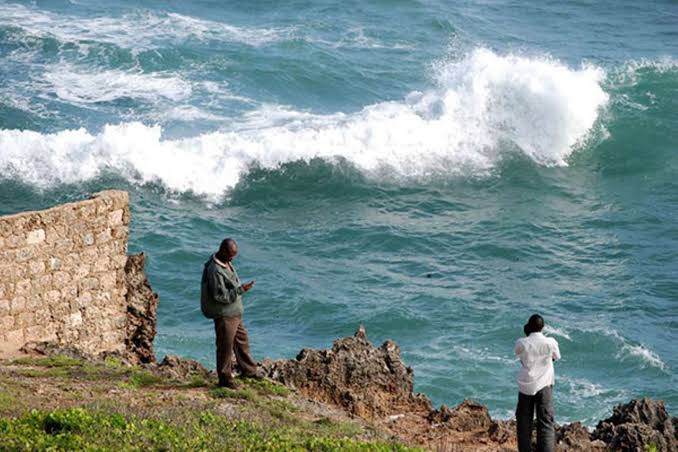High tides witnessed in the Indian Ocean //Photo Courtesy
The effects of rising sea levels on coastal communities are devastating and far-reaching, impacting the lives of millions of people worldwide.
Coastal areas are experiencing more frequent and severe flooding, especially during storms and high tides. Cities like Miami, Jakarta, and Venice are already facing the challenges of “sunny day flooding,” where streets are invaded by seawater even without the presence of storms.
The rising sea levels are eroding beaches, wetlands, and shorelines, destroying natural barriers that protect communities from the wrath of storms and high waves. This puts coastal towns and villages at risk of losing land, homes, and essential infrastructure.
Small island nations like the Maldives and Tuvalu are facing the harsh reality of becoming uninhabitable, forcing residents to seek new homes. In larger coastal cities, millions of people are at risk of displacement due to frequent flooding and property damage.
The economic impact of flooding is significant, with damages to homes, businesses, and public infrastructure leading to substantial losses. Regions dependent on tourism may suffer as beaches disappear, and the fishing industry faces challenges due to disrupted marine ecosystems.
The intrusion of saltwater into freshwater sources is a critical issue, affecting drinking water supplies and agriculture. Low-lying regions like Bangladesh and parts of Florida are particularly vulnerable to this problem.
To address these challenges, countries like the Netherlands and Japan have invested in building sea walls and flood barriers to protect coastal communities. Restoring natural barriers such as mangroves, coral reefs, and wetlands can also help reduce the impact of rising sea levels. Sustainable urban planning, including flood-resistant infrastructure and reducing greenhouse gas emissions, is essential to adapt to changing conditions.
Governments must also develop long-term strategies for planned relocation and adaptation to minimize displacement and loss of livelihoods.
The threat of rising sea levels to coastal communities is real and urgent. Without immediate action to mitigate climate change and implement adaptive solutions, the consequences will continue to worsen. By combining sustainable policies, technological innovation, and community resilience, we can protect vulnerable regions and ensure a safer future for generations to come.















Leave a comment